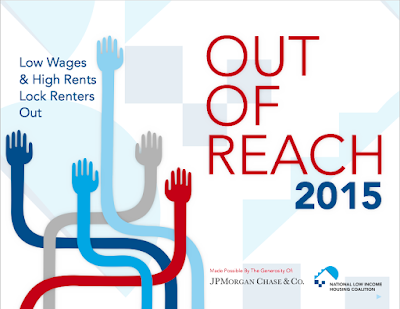The U.S. Department of Health & Human Services ("HHS") dropped the ball when it recently defined discrimination in plan benefit design under the Affordable Care Act ("ACA"); that statement is plainly put because it is true! Absent clearer guidelines, HHS basically issued a green light for insurance carriers to potentially discriminate against people living with chronic illnesses, including HIV/AIDS. Stakeholder groups have cried foul over the regulations, characterizing them as weak.
The ACA's Section 1557 is the nondiscrimination provision of the law. It law prohibits discrimination on the basis of race, color, national origin, sex, age, or disability in certain health programs or activities. Section 1557 builds on long-standing and familiar Federal civil rights laws: Title VI of the Civil Rights Act of 1964, Title IX of the Education Amendments of 1972, Section 504 of the Rehabilitation Act of 1973 and the Age Discrimination Act of 1975.[1]
| Photo Source: Class Action News |
- placing all or nearly all medications to treat a certain condition on the highest cost-sharing tier;
- not covering certain medications or not following treatment guidelines;
- imposing excessive medication management tools such as unreasonable prior authorization, step therapy requirements, and switching medications midyear;
- charging high cost-sharing to beneficiaries with chronic or serious conditions;
- and having narrow and exclusionary provider networks.
To read the letter, CLICK HERE.
There is plenty of evidence to suggest that marketplace plans are already engaged in discriminatory practices, which in many cases have adversely impacted patients living with HIV/AIDS. High deductibles, high co-insurance, and high co-payments are a few tactics being used by insurance carriers to shift the cost of care to patients living with chronic illnesses. To read last week's blog on this trend, CLICK HERE.
HHS, however, did leave the door open to review alleged discrimination on a case-by-case basis. Albeit welcome news, there has to be a better approach to potential barriers that may arise.
Carl Schmid, Deputy Executive Director, The AIDS Institute, characterized some of the concerns, "We are disappointed that HHS did not do a better job at specifically defining discrimination in plan benefit design. Despite the many benefits of the ACA and its prohibition on denying coverage to beneficiaries with a pre-existing condition, some insurance plans are finding ways to discriminate against patients, particularly those with chronic and serious health conditions. Those practices should be defined and clearly prohibited. However, we are pleased that HHS reiterated they will review plans for discriminatory practices on a case-by-case basis through their enforcement activities, and identified a number of examples of possible discriminatory plan design. We urge the Administration to rigorously use their oversight and enforcement tools."[3]
Even the pharmaceutical industry's trade association expressed caution over the regulations issued by HHS, acknowledging that they neglect to define discrimination. The Catalyst, which is the Pharmaceutical Research and Manufacturers of America's (PhRMA) blog, said:
"Protecting patients from discriminatory benefits is particularly important when it comes to plan formularies. For many patients with chronic conditions, it is relatively easy to predict their prescription drug needs. This means plans may be able to discourage enrollment by certain higher cost individuals simply by not covering the medicines they need or placing them on a high formulary tier. Unfortunately, we have seen many marketplace plans placing all medicines for certain conditions on the specialty tier or on a tier with coinsurance above 40 percent. In some cases, this is even happening in classes where generics are available. This leaves patients with no lower cost alternative and goes against the very nature of insurance by punishing individuals who happen to need a particular class of medicine."[4]
It is crucial that the public health community continue to monitor these glitches with the Affordable Care Act and collaborate on solutions to better assist patients living with chronic illnesses. Left unchecked, insurance carriers have demonstrated a history of pushing the envelope when it comes to discriminating against HIV/AIDS.
__________
[1] U.S. Department of Health & Human Services, Office of Civil Rights, "Section 1557 of the Patient Protection and Affordable Care Act," 2016.
[2] I Am Essential, "Patient Groups React to Final ACA Nondiscrimination Rule," May 13, 2016.
[3] I Am Essential, "Patient Groups React to Final ACA Nondiscrimination Rule," May 13, 2016.
[4] Pharmaceutical Research and Manufacturers of America, The Catalyst, "New non-discrimination rule neglects to define discriminatory benefits," May 19, 2016.


